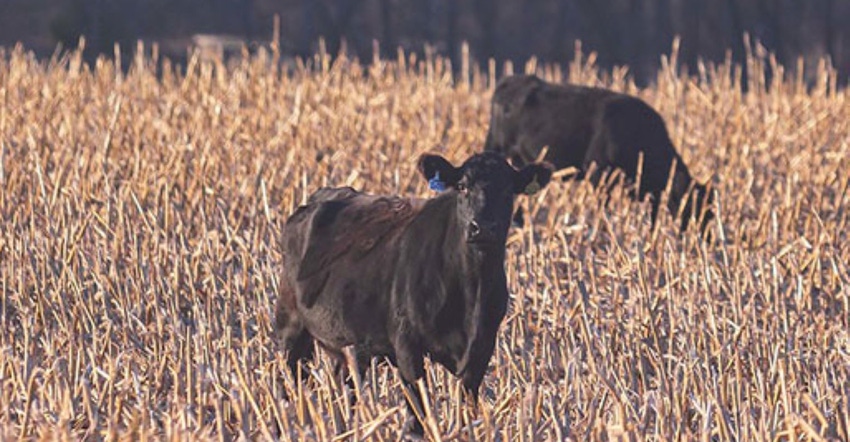Ranchers who notice thin cows should make sure feed access is adequate.
December 17, 2020

Navigating the holiday season, with all of its eating and drinking events, has most people watching their rate of weight gain and striving for a skinner physique. Experts say that while that works for people, it’s not a good idea at all for cows, especially those that will be delivering a calf in just a few weeks.
Experts at Kansas State University’s Beef Cattle Institute discussed the topic of cow nutrition on a recent Cattle Chat podcast.
“Thin cows have a higher maintenance requirement in the winter than cows in adequate condition, because they have to work harder to stay warm,” said Bob Weaber, beef cattle specialist and podcast contributor.
To assess the herd, veterinarian Bob Larson suggests ranchers periodically check cows, and even take pictures of the herd to help monitor changes over time.
“In any group, I expect some variation in the condition, but ideally I want almost all the cows to be in a moderate body condition,” Larson said. “And if they are, then I know that I am managing the group pretty well.”
Larson said if cattle ranchers notice that there are thin cows in the herd, they may need to evaluate the situation further to see if there is a pattern tied to their age or access to feed.
“The number of [thin] cows in the herd will creep up if, for example, they are getting pushed out of the feed bunk and not getting the protein supplementation they need,” Larson said.
The experts agree that 2 feet of bunk space per head is the minimum amount of space needed.
“If you only allocate a foot and a half on a single-sided feed bunk, the big cows will push out the thinner, smaller cows that really need the feed,” Weaber said. He prefers to place the feed bunk in the middle of the pasture, so cattle can access the feed from both sides.
Larson added that the amount of bunk space needed will depend on the type of feed provided and how quickly the cattle consume it.
“Big cubes fed on the ground will allow the cattle to have easy access because you can spread it out, but there is more feed waste and sanitation issues that come with that strategy,” veterinarian Brad White said.
When to add condition, when to cull
Once producers determine why some of the cows are thin, they may need to make culling decisions or form a plan to add condition back on the cows, according to Weaber.
“Identify the commonalities of the problem animals, and that will determine the best management strategies to fix it, as well as [offer] knowledge for the future,” Weaber said.
White suggested producers look at ways to segregate the thin cows.
“Grouping the thin cows together can be a powerful tool in giving them the extra feed they need ahead of calving season,” White said. The challenge, he added, may lie in where they are located and the ease of separating them for feeding.
Larson said it is important to consider where the cow is in the pregnancy when coming up with the supplementation plan.
“Right now, spring-calving cows are midway through their pregnancies, and the calves are not pulling that much nutrient demand from them; but as they get closer to calving, that demand goes up significantly,” Larson said.
He added, “The cow’s maintenance cost is the lowest it is going to be right now, and that makes it a good time to put some weight on her rather than waiting to do it later.”
Weaber advised producers to calculate the days to calving when figuring out the gain needed.
White gave an example: “If I have 100 days, I could target the cows to gain 2 pounds per day. That will give them about 200 pounds of gain.”
The bottom line, White said, is to “do the math for your herd and then figure out if it is just a couple individuals that need to gain weight or the entire group, because that answer will drastically change the decision you make and what options are available.”
To hear more of the discussion about managing thin cows, listen to the Cattle Chat podcast online.
Source: Kansas State University’s Beef Cattle Institute, which is solely responsible for the information provided and is wholly owned by the source. Informa Business Media and all its subsidiaries are not responsible for any of the content contained in this information asset.
You May Also Like



